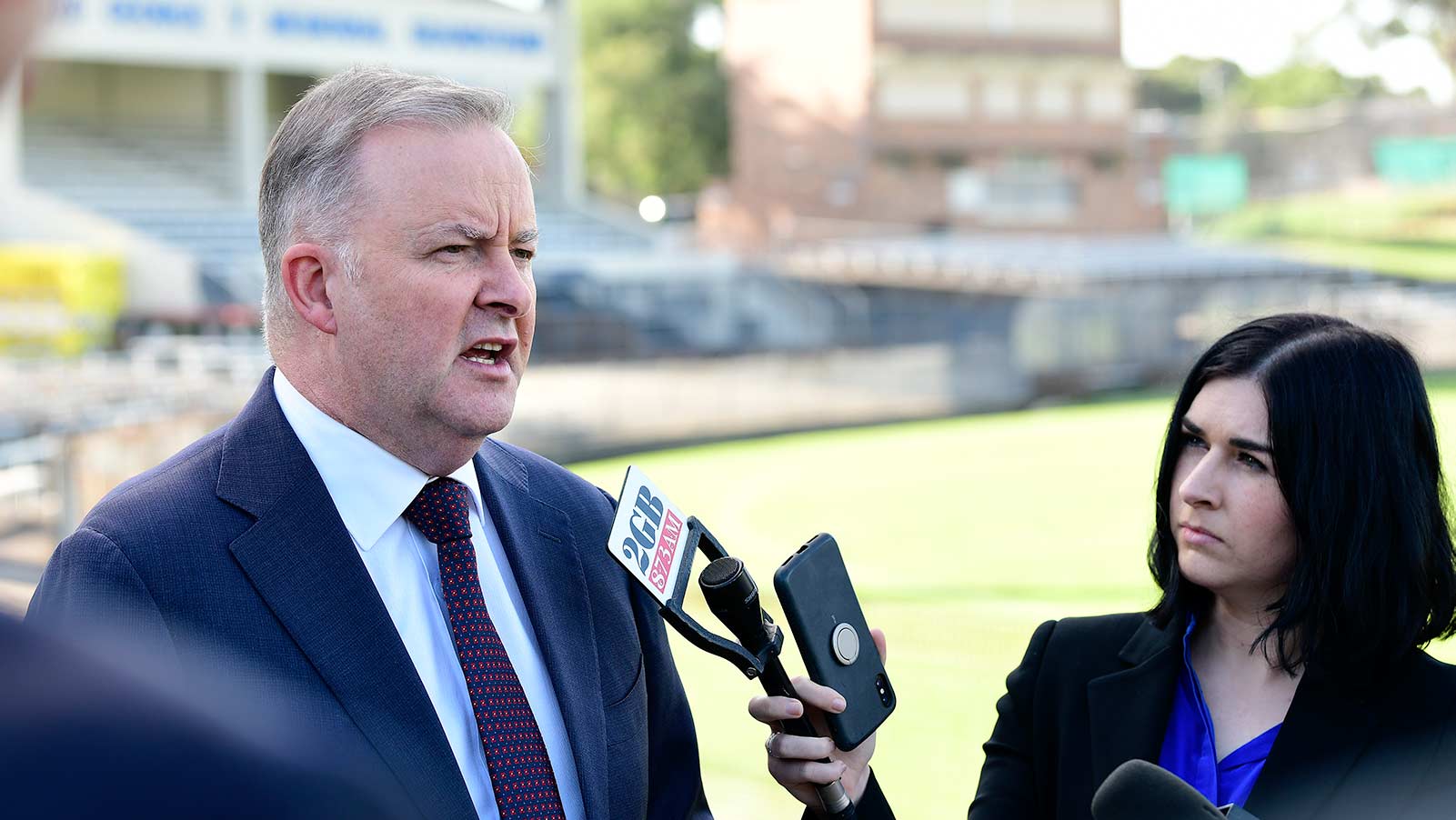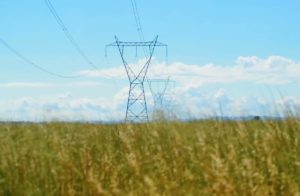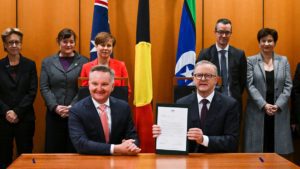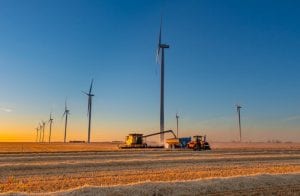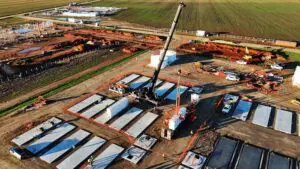With the Morrison government settling its climate policy stance – such as they are – ahead of an election to be held within the next six months, the focus now switches to the Labor Party and whether it has the courage to make a strong statement that fills the Coalition policy void.
The last month (and arguably the last eight years) has been a chaotic whirlwind for federal Coalition – and by extension, Australian – climate and energy policy.
The close of the COP26 climate talks on Sunday marked exactly four weeks since federal Nationals MPs met in Canberra to consider endorsing a commitment to a net zero target.
Since then, we’ve seen the government release its low emissions “plan”, predicated on existing government policies and unspecified technology advancements, Morrison and Taylor’s unconvincing performance in Glasgow where they spruiked Australia as an attractive place to invest in fossil fuels projects, and the release of government modelling that shows the government prioritising fossil fuels over farmers.
The period has culminated with Nationals MPs disavowing themselves of any commitments made on Australia’s behalf in Glasgow – within hours of the meeting closing – meaning that Australia is unlikely to budge on its 2030 emissions targets unless there is a change of government.
It has been a period that has presented ample materiel for the Labor opposition to level attacks on the Morrison government for its failures in handling the climate crisis – but the opposition party is trying not to be noticed and has yet to deliver the details of its alternate vision.
Labor’s stance on climate targets, particularly its 2030 emissions targets, have been in a state of stasis since the 2019 federal election – to which it took a more ambitious 45 per cent emissions reduction target and 50 per cent renewable energy target.
Labor has been steadfast in its support for a net zero target for 2050, which had long been a point of differentiation between it and the Coalition, and there has never been any prospect of changing it.
But with that point of differentiation now neutralised, at least in headlines if not the details of the Coalition “plan”, Labor essentially has a big decision to make in the lead up to the next federal election.
Does Labor seek to better the Morrison government’s 2030 targets, perhaps by adopting the 35 per cent reduction from 2005 levels that government projections show may be achieved independent of federal government policy?
It would be an improvement from Morrison government’s 26 to 28 per cent target, inherited from the Abbott era, but it would still be viewed by many as a ‘do nothing’ target, given it would be achieved on the back of the policies already being adopted by state and territory governments.
A weak target would make Labor vulnerable to electoral attacks from the Greens, which will be aiming to pick up a number of key metropolitan seats to boost its representation in the House of Representatives, as well as pick up new Senate seats in New South Wales, Queensland and South Australia.
Labor, however, may fear being too ambitious given the likely scare campaign that will be run by the Liberals and the Nationals. Scott Morrison, who is already in campaign mode, has already concocted criticisms of largely fictional Labor policies that he claims were taken to the last election.
What we do know from federal Labor leader Anthony Albanese is that further details of Labor’s policies will be released before the end of the year.
“We already have a circumstance whereby we have released net zero by 2050. No ifs, no buts,” Albanese told a press conference on Monday. “That’s our policy. We didn’t have to wait until three days before someone jetted off to a conference to do that.”
“I find it completely extraordinary that 24 hours after the Federal Government signed up to having a higher 2030 target in 2022, they’ve walked away from that commitment that they voluntarily signed up to in Glasgow.”
The Glasgow Pact called on countries to bring updated targets to the next round of climate talks amid growing scientific evidence that the immediate term response to climate change is the most crucial.
Whatever target Labor does land on, it will need to outline the policies it will use to achieve it.
One politically easy solution would be to adapt the Coalition’s own Safeguard Mechanism, so that it operates as an effective baseline-and-credit emissions trading scheme. By recycling the government’s own policy mechanism, Labor would be able to dull any potential attacks.
Labor has already announced a number of new policies, including financial incentives for drivers to switch to electric vehicles.
The Labor re-election platform will also include the expansive $20 billion ‘Rewiring the Nation’ plan, that would invest in network infrastructure to facilitate the addition of new wind and solar projects to the Australian grid, and support the emergence of new green steel, aluminium and hydrogen industries.
Labor has also announced policies to boost apprenticeships in clean energy industries, investments, and funding the deployment of community batteries across 400 locations to support the installation of more rooftop solar on homes and businesses.
In government, Labor has said it would commission the Treasury department to deliver modelling of the economics of its policy package.
“We’re cutting households bills by scrapping inefficient taxes off electric vehicles, making them more affordable for families, and installing 400 community batteries around the country,” Labor’s climate and energy spokesperson Chris Bowen told RenewEconomy.
“These policies and more will support Labor’s strong roadmap to 2050.”
“Reducing emissions isn’t just the right thing to do for our environment, our regions and future generations. It’s in our national economic interest.”
But until Labor is able to settle on a new 2030 target, and provide some level of plan for how it intends to meet its target, the Morrison government has a fairly easy retort to any criticisms Labor tries to level on the government’s underwhelming “plan” and ignominious performance in Glasgow.

